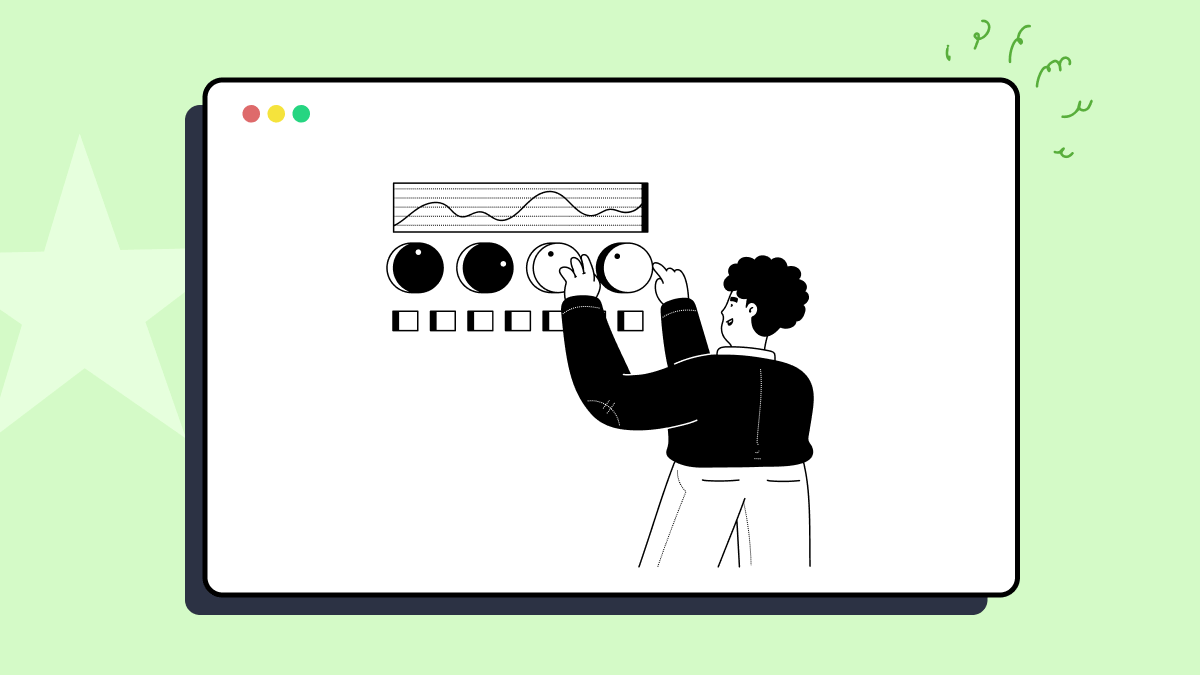How to use annotatedInstanceNotOfType method of net.serenitybdd.jbehave.embedders.monitors.CompositeEmbedderMonitor class
Best Serenity jBehave code snippet using net.serenitybdd.jbehave.embedders.monitors.CompositeEmbedderMonitor.annotatedInstanceNotOfType
Source: CompositeEmbedderMonitor.java
...303 }304 processSuppressed(exceptions);305 }306 @Override307 public void annotatedInstanceNotOfType(final Object annotatedInstance, final Class<?> type) {308 logger.debug("annotatedInstanceNotOfType {} {}", annotatedInstance, type);309 final LinkedList<Exception> exceptions = new LinkedList<>();310 for (final EmbedderMonitor monitor : this.monitors) {311 try {312 monitor.annotatedInstanceNotOfType(annotatedInstance, type);313 } catch (final Exception suppressed) {314 logger.error("exception during calling {}#annotatedInstanceNotOfType", monitor.getClass(), suppressed);315 exceptions.add(suppressed);316 }317 }318 processSuppressed(exceptions);319 }320 @Override321 public void mappingStory(final String storyPath, final List<String> metaFilters) {322 logger.debug("mappingStory {} {}", storyPath, metaFilters);323 final LinkedList<Exception> exceptions = new LinkedList<>();324 for (final EmbedderMonitor monitor : this.monitors) {325 try {326 monitor.mappingStory(storyPath, metaFilters);327 } catch (final Exception suppressed) {328 logger.error("exception during calling {}#mappingStory", monitor.getClass(), suppressed);...annotatedInstanceNotOfType
Using AI Code Generation
1import net.serenitybdd.jbehave.SerenityStories;2import net.serenitybdd.jbehave.embedders.monitors.CompositeEmbedderMonitor;3import net.serenitybdd.jbehave.embedders.monitors.ExampleEmbedderMonitor;4import net.thucydides.core.reports.adaptors.xunit.model.TestCase;5import net.thucydides.core.reports.adaptors.xunit.model.TestSuite;6import net.thucydides.core.reports.adaptors.xunit.model.TestSuites;7import org.jbehave.core.annotations.AfterScenario;8import org.jbehave.core.annotations.BeforeScenario;9import org.jbehave.core.annotations.ScenarioType;10import org.jbehave.core.embedder.Embedder;11import org.jbehave.core.embedder.EmbedderControls;12import org.jbehave.core.embedder.EmbedderMonitor;13import org.jbehave.core.embedder.StoryControls;14import org.jbehave.core.embedder.StoryManager;15import org.jbehave.core.embedder.StoryRunner;16import org.jbehave.core.embedder.StoryTimeouts;17import org.jbehave.core.embedder.executors.SameThreadExecutors;18import org.jbehave.core.embedder.executors.StoryExecutor;19import org.jbehave.core.embedder.executors.ThreadedExecutors;20import org.jbehave.core.embedder.executors.UsingExecutors;21import org.jbehave.core.embedder.executors.UsingThreads;22import org.jbehave.core.embedder.executors.UsingUnlimitedThreads;23import org.jbehave.core.embedder.executors.UsingUnlimitedThreads;24import org.jbehave.core.embedder.performers.EmbedderPerformableTree;25import org.jbehave.core.embedder.performers.PerformableTree;26import org.jbehave.core.embedder.performers.PerformableTree.PerformableRoot;27import org.jbehave.core.embedder.performers.PerformableTree.PerformableStory;28import org.jbehave.core.embedder.performers.PerformableTree.PerformableStoryAsGivenWhenThens;29import org.jbehave.core.embedder.performers.PerformableTree.PerformableStoryAsNarrative;30import org.jbehave.core.embedder.performers.PerformableTree.PerformableStoryAsScenario;31import org.jbehave.core.embedder.performers.PerformableTree.PerformableStoryAsScenarioGivenWhenThens;32import org.jbehave.core.embedder.performannotatedInstanceNotOfType
Using AI Code Generation
1package net.serenitybdd.jbehave.embedders.monitors;2import java.util.List;3import net.thucydides.core.annotations.Steps;4import net.thucydides.core.steps.StepEventBus;5import org.jbehave.core.configuration.Configuration;6import org.jbehave.core.embedder.Embedder;7import org.jbehave.core.embedder.EmbedderControls;8import org.jbehave.core.embedder.EmbedderMonitor;9import org.jbehave.core.embedder.StoryManager;10import org.jbehave.core.embedder.StoryTimeouts;11import org.jbehave.core.embedder.executors.ExecutorServiceFactory;12import org.jbehave.core.embedder.executors.SameThreadExecutors;13import org.jbehave.core.failures.BatchFailures;14import org.jbehave.core.failures.UUIDExceptionWrapper;15import org.jbehave.core.model.Story;16import org.jbehave.core.reporters.ReportsCount;17import org.jbehave.core.reporters.StoryReporter;18import org.jbehave.core.steps.CandidateSteps;19import org.jbehave.core.steps.InjectableStepsFactory;20import org.jbehave.core.steps.StepCollector.Stage;21public class CompositeEmbedderMonitor implements EmbedderMonitor {22 private final EmbedderMonitor[] monitors;23 public CompositeEmbedderMonitor(EmbedderMonitor... monitors) {24 this.monitors = monitors;25 }26 public void runningEmbeddables(List<String> embeddableClasses) {27 for (EmbedderMonitor monitor : monitors) {28 monitor.runningEmbeddables(embeddableClasses);29 }30 }31 public void embeddablesFailed(String name, Throwable cause) {32 for (EmbedderMonitor monitor : monitors) {33 monitor.embeddablesFailed(name, cause);34 }35 }36 public void embeddablesSkipped(String name) {37 for (EmbedderMonitor monitor : monitors) {38 monitor.embeddablesSkipped(name);39 }40 }41 public void runningStories(List<String> storyPaths) {42 for (EmbedderMonitor monitor : monitors) {43 monitor.runningStories(storyPaths);44 }45 }46 public void storiesFailed(String path, Throwable cause) {47 for (EmbedderMonitor monitor : monitors) {48 monitor.storiesFailed(path, cause);49 }50 }51 public void storiesSkipped(String path) {52 for (EmbedderMonitor monitor : monitors) {53 monitor.storiesSkipped(pathannotatedInstanceNotOfType
Using AI Code Generation
1 public void annotatedInstanceNotOfType(Class<?> type) {2 if (type.isAssignableFrom(EmbedderControls.class)) {3 embedderControls = new SerenityStoryControls();4 }5 }6}7package net.serenitybdd.jbehave.embedders.monitors;8import net.thucydides.core.util.EnvironmentVariables;9import org.jbehave.core.embedder.EmbedderControls;10public class SerenityStoryControls extends EmbedderControls {11 public SerenityStoryControls() {12 super();13 }14 public SerenityStoryControls(EnvironmentVariables environmentVariables) {15 super();16 useThreads(environmentVariables.getPropertyAsInteger("jbehave.threads", 1));17 }18}annotatedInstanceNotOfType
Using AI Code Generation
1package com.mycompany.myproject;2import java.io.File;3import java.io.FileNotFoundException;4import java.io.PrintWriter;5import java.io.UnsupportedEncodingException;6import java.util.List;7import net.serenitybdd.jbehave.SerenityStories;8import net.serenitybdd.jbehave.embedders.monitors.CompositeEmbedderMonitor;9import net.serenitybdd.jbehave.embedders.monitors.StepAnnotator;10import net.thucydides.core.util.EnvironmentVariables;11import net.thucydides.core.util.SystemEnvironmentVariables;12public class MyStory extends SerenityStories {13 private static final String STORY_EXTENSION = ".story";14 private static final String STORY_PATH = "src/test/resources/com/mycompany/myproject/";15 private static final String LOG_FILE_PATH = "src/test/resources/com/mycompany/myproject/log/";16 private static final String LOG_FILE_NAME = "log.txt";17 public MyStory() {18 super();19 findStoriesCalled("*.story");20 }21 public CompositeEmbedderMonitor embedderMonitor() {22 return new CompositeEmbedderMonitor() {23 public void annotatedInstanceNotOfType(Object annotatedInstance, Class<?> type) {24 String storyName = annotatedInstance.getClass().getSimpleName();25 storyName = storyName.replace(STORY_EXTENSION, "");26 List<String> unannotatedSteps = StepAnnotator.getUnannotatedSteps(annotatedInstance);27 writeToLog(storyName, unannotatedSteps);28 }29 };30 }31 private void writeToLog(String storyName, List<String> unannotatedSteps) {32 File file = getLogFile();33 try (PrintWriter writer = new PrintWriter(file)) {34 writer.println(storyName);35 for (String step : unannotatedSteps) {36 writer.println(step);37 }38 } catchStackOverFlow community discussions
Continue Execution of next steps in Serenity Jbehave BDD by capturing failure reason for the failed steps
Integrating Spring with Serenity/JBehave test
How do you exclude @skips from Serenity reports while running JBehave tests?
JBehave empty context
Serenity Bdd Report not getting generated after testcase is success- (In Eclipse and Jenkins both)
How to set up a configured embedder for use of meta filters (-skip) with Serenity, JBehave and Selenium
Getting "java.lang.NoClassDefFoundError: org/junit/platform/engine/DiscoverySelector" trying to run Serenity JBheave
Add a JIRA link to karate/cucumber report
JBehave + Serenity metafilter work on examples table row? how to workaround it?
How to set up a configured embedder for use of meta filters (-skip) with Serenity, JBehave and Selenium
If you need to continue after a failed step, you should use soft assertions.
Blogs
Check out the latest blogs from LambdaTest on this topic:
Automation frameworks enable automation testers by simplifying the test development and execution activities. A typical automation framework provides an environment for executing test plans and generating repeatable output. They are specialized tools that assist you in your everyday test automation tasks. Whether it is a test runner, an action recording tool, or a web testing tool, it is there to remove all the hard work from building test scripts and leave you with more time to do quality checks. Test Automation is a proven, cost-effective approach to improving software development. Therefore, choosing the best test automation framework can prove crucial to your test results and QA timeframes.
With the change in technology trends, there has been a drastic change in the way we build and develop applications. It is essential to simplify your programming requirements to achieve the desired outcomes in the long run. Visual Studio Code is regarded as one of the best IDEs for web development used by developers.
The automation backend architecture of Appium has undergone significant development along with the release of numerous new capabilities. With the advent of Appium, test engineers can cover mobile apps, desktop apps, Flutter apps, and more.
Automation Testing Tutorials
Learn to execute automation testing from scratch with LambdaTest Learning Hub. Right from setting up the prerequisites to run your first automation test, to following best practices and diving deeper into advanced test scenarios. LambdaTest Learning Hubs compile a list of step-by-step guides to help you be proficient with different test automation frameworks i.e. Selenium, Cypress, TestNG etc.
LambdaTest Learning Hubs:
- JUnit Tutorial
- TestNG Tutorial
- Webdriver Tutorial
- WebDriverIO Tutorial
- Protractor Tutorial
- Selenium 4 Tutorial
- Jenkins Tutorial
- NUnit Tutorial
- Jest Tutorial
- Playwright Tutorial
- Cypress Tutorial
- PyTest Tutorial
YouTube
You could also refer to video tutorials over LambdaTest YouTube channel to get step by step demonstration from industry experts.
Most used method in CompositeEmbedderMonitor
- subscribe
- unsubscribe
- runningEmbeddable
- embeddableFailed
- embeddableNotConfigurable
- embeddablesSkipped
- metaNotAllowed
- runningStory
- storyFailed
- storiesSkipped
- storiesNotAllowed
- scenarioNotAllowed
- batchFailed
- beforeOrAfterStoriesFailed
- generatingReportsView
- reportsViewGenerationFailed
- reportsViewGenerated
- reportsViewFailures
- reportsViewNotGenerated
- runningWithAnnotatedEmbedderRunner
- annotatedInstanceNotOfType
- mappingStory
- generatingMapsView
- mapsViewGenerationFailed
- generatingNavigatorView
- navigatorViewGenerationFailed
- navigatorViewNotGenerated
- processingSystemProperties
- systemPropertySet
- storyTimeout
- usingThreads
- usingExecutorService
- usingControls
- invalidTimeoutFormat
- usingTimeout
Try LambdaTest Now !!
Get 100 minutes of automation test minutes FREE!!




